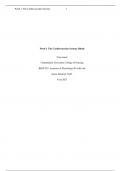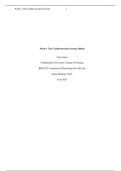Bios255 week 1 discussion - Study guides, Class notes & Summaries
Looking for the best study guides, study notes and summaries about Bios255 week 1 discussion? On this page you'll find 8 study documents about Bios255 week 1 discussion.
All 8 results
Sort by
Describe the composition, physical characteristics, and functions of whole blood. Explain why it is classified as a connective tissue.
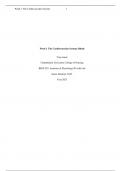
-
BIOS 255 Week 1 Discussion; The Cardiovascular System; Blood (2 Versions)
- Other • 4 pages • 2023
- Available in package deal
-
- $17.99
- + learn more
Describe the composition, physical characteristics, and functions of whole blood. Explain why it is classified as a connective tissue.
BIOS 255 Week 1 Discussion; The Cardiovascular System; Blood (2 Versions)
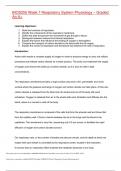
-
BIOS255 Week 7 Respiratory System-Physiology – Graded An A+
- Other • 6 pages • 2024
-
Available in package deal
-
- $11.49
- + learn more
BIOS255 Week 7 Respiratory System-Physiology – Graded An A+ Learning objectives: 1. State the functions of respiration. 2. Identify the components of the respiratory membrane. 3. Define the la ws that govern the movement of gas through a tissue. 4. Distinguish between external and internal respiration. 5. Explain the factors that influence the binding of oxygen to hemoglobin. 6. Compare the transport of carbon dioxide by the blood with that of oxygen. 7. Explain the control of respiration and ...
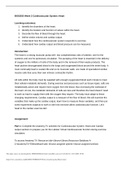
-
BIOS-255 Week 2 Assignment: The Cardiovascular System: Heart (graded)
- Exam (elaborations) • 6 pages • 2022
-
Available in package deal
-
- $10.99
- + learn more
BIOS255 Week 2 Cardiovascular System: Heart Learning outcomes: 1. Identify the chambers of the heart. 2. Identify the location and function of valves within the heart. 3. Describe the flow of blood through the heart. 4. Define stroke volume and cardiac output. 5. Understand how the cardiovascular system responds to exercise. 6. Understand how cardiac output and blood pressure can be measured. Introduction: The heart is a strong muscular pump with two complementary sets of arteries: ...
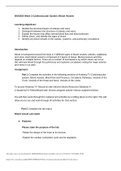
-
BIOS-255 Week 3 Assignment: Cardiovascular System: Blood Vessels | OPTION B | GRADED A
- Exam (elaborations) • 8 pages • 2022
-
Available in package deal
-
- $10.99
- + learn more
BIOS255 Week 3 Cardiovascular System: Blood Vessels Learning objectives: 1. Identify the structural layers of arteries and veins. 2. Distinguish between the structure of arteries and veins. 3. Explain the factors that affect arterial blood flow and blood pressure. 4. Define shock, and identify the signs of shock. 5. Identify key blood vessels of the cardiac, systemic, and pulmonary circulations. Introduction: Blood is transported around the body in 3 different types of blood vessels: arteries, c...

-
BIOS 255 Week 1 Discussion; Blood
- Other • 1 pages • 2022
- Available in package deal
-
- $12.49
- + learn more
Blood is made up of four main components: plasma, red blood cells, white blood cells, as well as platelets. The hue of blood varies depending on the amount of oxygen it carries. Blood is denser than water. Blood is somewhat alkaline, with a pH of 7.35 to 7.45 and has a temperature of 100.4 degrees Fahrenheit. Blood makes up about 8% of our weight. “The lungs and tissues receive oxygen and nourishment via blood. To avoid excessive blood loss, blood clots are formed. harboring infection-fighting...
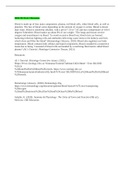
-
BIOS255 Week 1 Discussion; Blood
- Other • 1 pages • 2022
-
- $15.49
- + learn more
Blood is made up of four main components: plasma, red blood cells, white blood cells, as well as platelets. The hue of blood varies depending on the amount of oxygen it carries. Blood is denser than water. Blood is somewhat alkaline, with a pH of 7.35 to 7.45 and has a temperature of 100.4 degrees Fahrenheit. Blood makes up about 8% of our weight. “The lungs and tissues receive oxygen and nourishment via blood. To avoid excessive blood loss, blood clots are formed. harboring infection-fighting...

$6.50 for your textbook summary multiplied by 100 fellow students... Do the math: that's a lot of money! Don't be a thief of your own wallet and start uploading yours now. Discover all about earning on Stuvia

